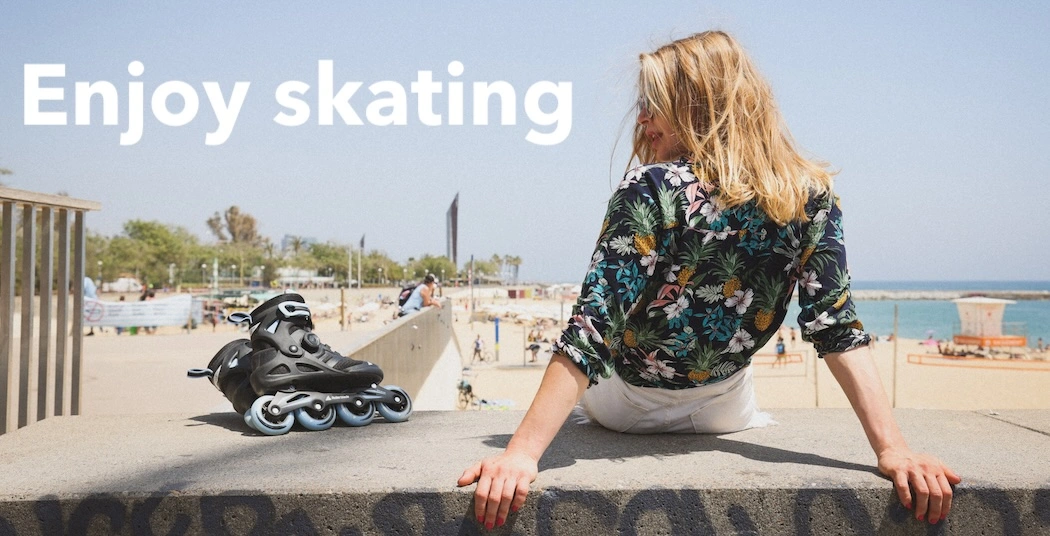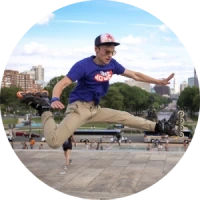How to stop on rollerblades safely
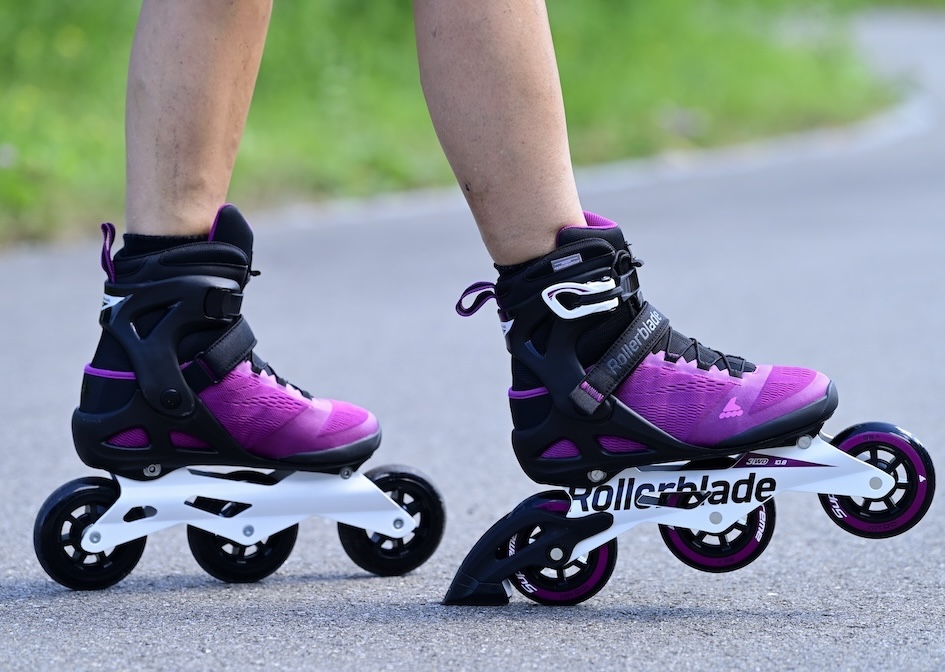
To taste the true ecstasy of rollerblading, the proper form of braking has to be perfected. The various techniques of braking, which rollerbladers learn, are what make them easily glide to perform miraculous tricks and avoid some of the injuries. This article brings out some essential information that beginners will need to master before leaving for their first skating session.
Some advice for newbies
One thing to note is that if you do not have previous experience, then you should buy inline skates either for adults or children, as long as there is a mechanism in the form of a standard brake. This small little feature is very essential as it helps to ensure you experience a slow and controlled stop.

The next important consideration is the protection of the head, elbows, and knees. Rollerblading is associated with potential injury hazards; therefore, safety considerations should be given top priority by acquiring protective items such as helmets, knee pads, and elbow pads. We also insist on using special gloves that protect the wrists, so your hands will be safe while having fun with inline skating. This is mainly for children rollerblading. The quality of the protection items must therefore be carefully checked, including the density of protection material, the firmness of fastenings, and assurance that the item is not defective. The protecting items should be sized appropriately for safety and to avoid interference with the blading thrill.
Get to know rollerblading specifics before buying rollerblades. It is indispensable to know how to brake—to know that will make it far easier to take the learning course and consequently have lots more fun with rollerblading.
The following rules for starting training must be adhered to by new inline skaters to avoid injuries:
- Avoid all hilly and rough areas.
- Keep this pace nice and steady.
- Practice Braking Variety: It is intended to offer you practice, and you will be encouraged to apply methods to slow down with the brake lever and to use emergency methods of slowing down.
It will also be important to develop the ability to balance on one leg while riding. This develops the execution of tricks, adding a little bit of flavor to your performance beyond knowing how to brake properly.
Give your priority to learning how to use the in-built brake in mastering inline skates, so begin by learning how to use it.
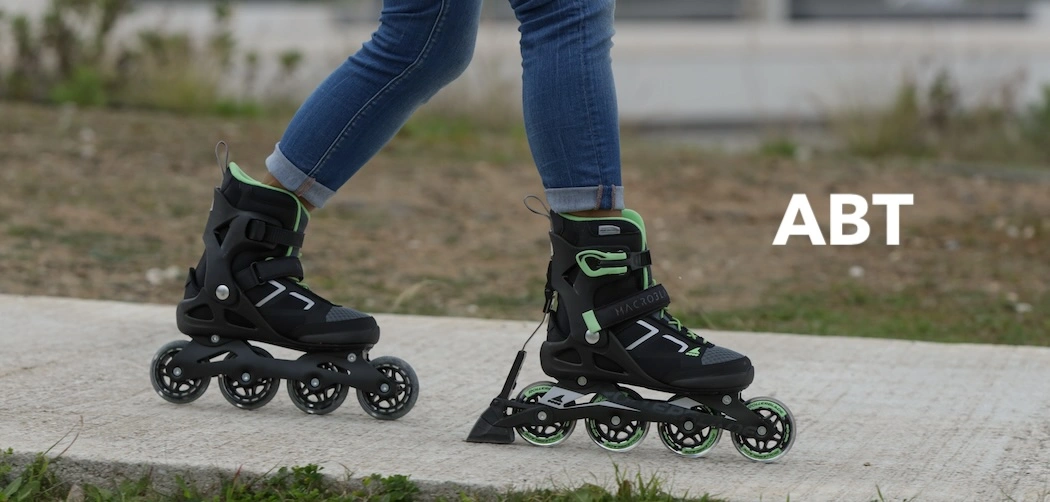
Slow down by using the regular brake
Though this trick seems pretty simple, it has some subtleties about it. The skater stops by:
- Now steps down on the brake, pushing it towards the front, slightly bending the knee, and shifts the weight of the body to the opposite foot.
- Gradually straighten the front leg and put the toe up and progressively up, with the brake lever coming to touch the ground. The frictional force between the braking part and the pavement is what decelerates speed. Attention shall be paid that against the pavement, gentle, moderate pressure is administered in a manner that no one will step on his foot.
Also put too much attention to your posture by bending a little forward supported by stretching your arms in front of you. This helps to limit chances of falling, but once you have stopped properly then you can straighten up.
One great thing to keep in mind is that the regular brake is not meant for high-speed driving or when an emergency stop is required. Doing that could make one lose balance and probably end up in a physical collision.
It's high time for early replacement if you are compelled to use the brake lever frequently. As a result of the high friction, the brake may contract with time.
Ways to stop in an emergency
While driving through this type of terrain, there can be several obstacles in the way, like architectural structures, vehicles, animals, and even pedestrians. So it's pretty important to know some emergency braking. Some of the popular techniques are:
- Ass-Stop (Buttocks Braking): the elbow is bent, hands clamped to the body, the roller itself is group-squatted with wide knees, and falls on the asphalt with buttocks.
- Grass stop (Jumping on grass): Rolling from skate to run, the roller exits the asphalt and moves into the grass.
- Falling on Protectors: The rollerblader falls bending the knees and the elbows, trying as much as possible to land on the knees and elbows, supported by kneepads and elbow guards.
- Stopping with an Object to Hold On To: Walk to a pole, bench, clothesline, or even a passerby, and just grab on for support.
In the event that there is nothing to stop against but a person, then it may be a good idea to avoid the sudden collision by yelling for help. That way, the person will not be surprised by your sudden stop and you are less likely to cause injury to them.
It is preferable to contact a building at an acute angle rather than a right angle. Though there would be bruises and scratches, the chances of sustaining more serious injuries are minimal in such an approach compared to colliding head-on.
The emergency stop is a dangerous technique because most of the time, it has to be done in an unpredictable situation. The application of emergency braking should be administered only as a last resort when the brake lever and other ways of slowing down will not help. To avoid the emergency stop situation, concentrate on perfecting technical means of stopping.
Mechanically induced maximum speed reduction;
Not only do such techniques help in ensuring safe braking, but also get exciting and fun-to-encounter riding experiences. The most common variations include
- V-stop: Also referred to as "plow.
- T-stop: A reduction in speed while proceeding in a straight line is produced by advancing the tip of the supporting leg toward the toe and transferring the entire body weight to that very leg. The other leg is put perpendicular to the direction of the movement and serves as a brake from behind.
- Snake It is a snakey motion to slow down.
- "Stomping": A characteristic way to come. Power-stop: the stopping technique that utilizes only the force of turning a rollerblader to send him in the backward direction.
There is also a "hockey-style" that will be suitable for more experienced skaters. This could be used in either techniques but now we can look at those details.
V-Stop on Skates
The V-stop, or "plow" stopping, is one of the techniques one is able to master early, since it is quite easy to perform. One only has to wide the spread of their legs and to bring their toes towards each other without letting them touch because it might see them fall. The back should be kept straight, and the arms are used for bary stabilization.
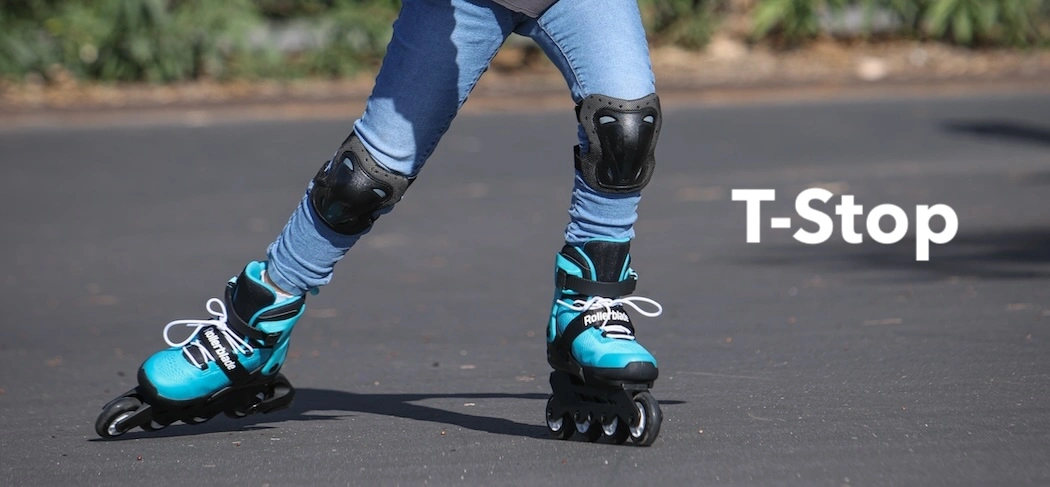
T-stop on skates
T-stop is all about slowing the pace on a straight path, a move that encourages the riding on one leg. The rider stands on one limb, decides it is the supporting one, and slightly bends the knee to avoid a possible loss of balance. The trailing lags extend to the back, and the foot places it at a right angle perpendicular to the movement direction. Lean slightly forward with arms stretched forward as the blader slow taps the ground with the skate to bring a stop, progress straightening in that process.
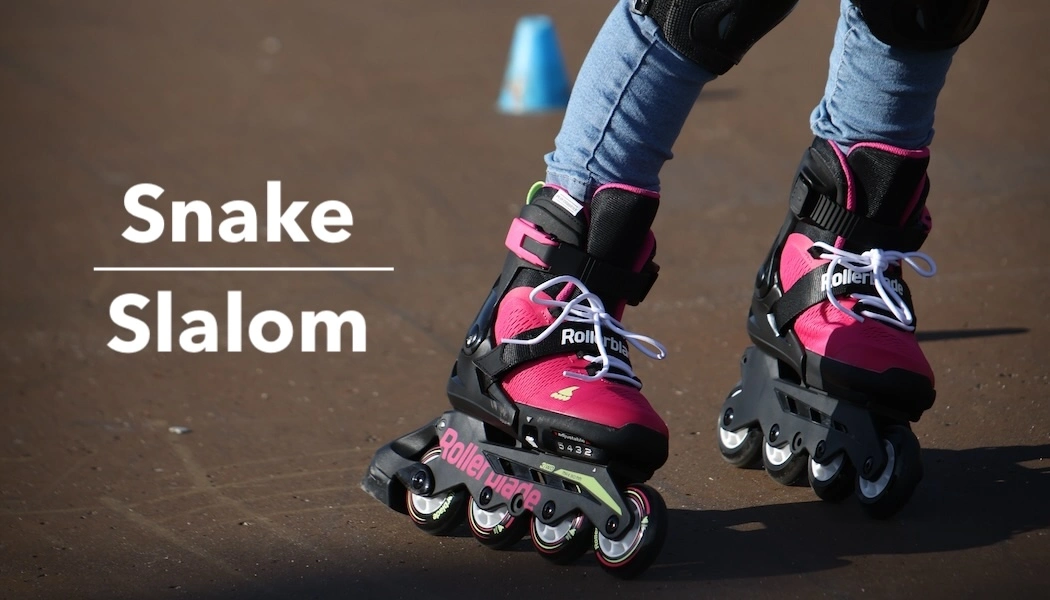
Slowing down like a snake
"Snake" or slalom: find a small hill in combination with a large open space, which will be used for minor maneuvering; go down the snake as if you were a snake.
The roller initiates a turn by flexing a supporting knee and extending in the direction of turn with the opposite leg and then changes leg positions simultaneously to prepare for the next turn. The body is inclined slightly toward the outside extended leg.
In the snake, the deceleration is progressive and takes place over several moves. For the more experienced, sharper turns can also be done for an even quicker stop.
Decelerate with your wheels on; it works on the same principle as regular brake application: the wheel of the toe on the back skate makes contact with the skate on the heel of the front skate.
"Stomping"
A very safe and simple stopping method, very much like the "plow" technique is done when the skater easily transfers their weight from one foot to the other, similar to that of a bear. The skates are put in a 45-degree angle up until they finally stop.
Powerstop or Powerslide — a stop with a backward turn
This technique is suitable for true masters of the art of skating. To perform the stop, the rollerblader quickly pivots backward, shifting their body weight onto one leg while in a squat position. They extend their arms out to the sides and keep their torso aligned with the supporting leg. The other leg is moved to the side, with the foot positioned perpendicular to the direction of movement at its maximum angle, effectively braking with all the wheels of the skate.
Hockey-style braking
The third out of the four turns is one of the most technically difficult corrections: the roller begins to turn very slightly before the action, very rapidly carrying both skates perpendicular to the axis of motion. Besides, the rollers have to be by an angle of attack for a rapid stop. This skill must be performed by an expert, and therefore it is only apt to be used in experienced athletes. At first, mastering roller skating seems impossible. However, after learning how to stop in control, lots of amazing tricks can be done, and a real passion for this action-packed recreational activity is shared.
